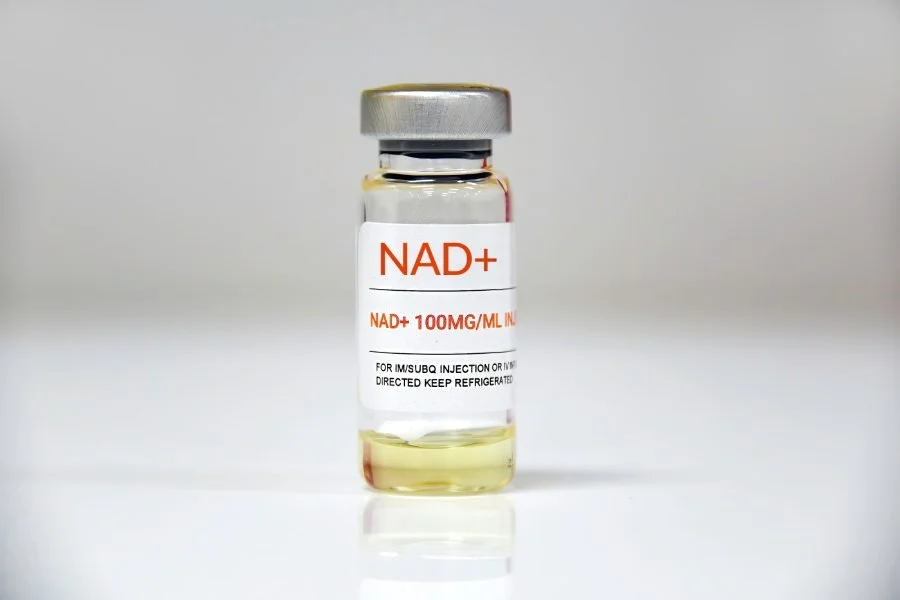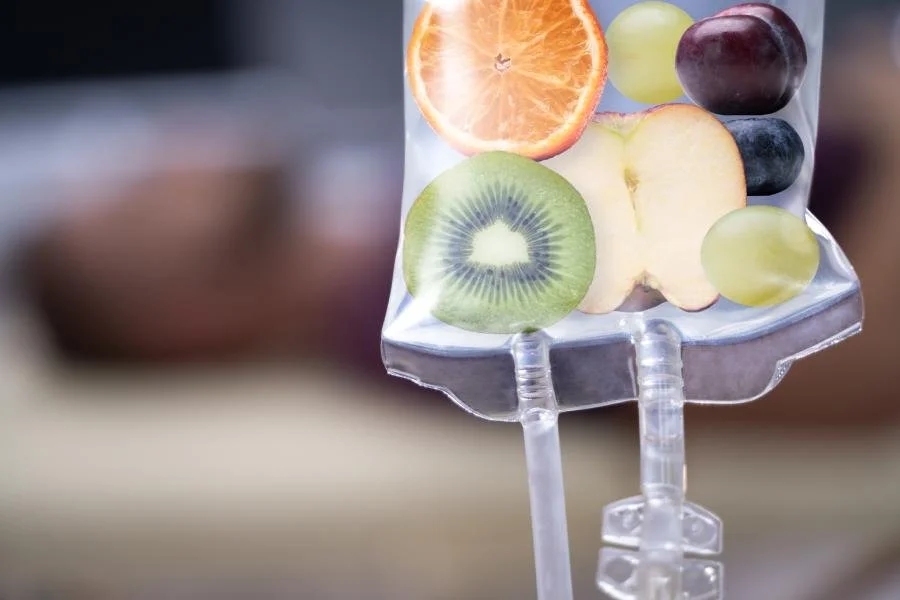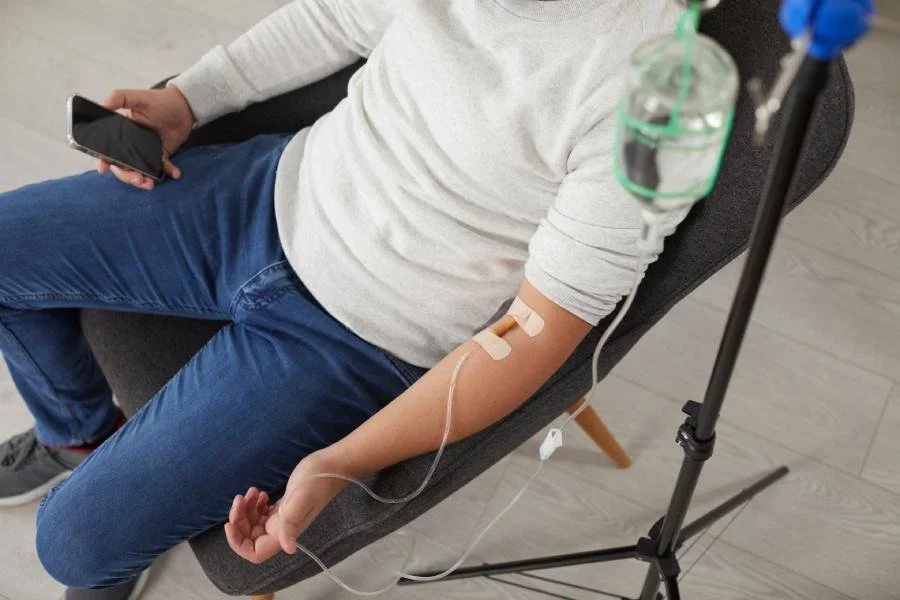
The rise of IV therapy in recent years is largely due to social media and celebrities boasting about the many benefits of it. Do you know that there are IV therapies for different health and wellness issues? One of them is NAD+. But what is NAD IV therapy?
As one of the fastest-rising and sought-after therapies, it is important to understand everything about NAD IV Therapy. This article will look into the uses, benefits, and side effects of NAD IV therapy.
Nicotinamide adenine dinucleotide is referred to as NAD+. This is one of the few coenzymes that are present in every living cell. NAD+ and NADH are the two forms that it takes. The oxidized form, NAD+, is an electron acceptor.
The reduced form, NADH, gives away electrons. When NAD+ drip receives electrons and hydrogen molecules, it transforms into NADH. Several physiological activities, including energy consumption, DNA repair, and gene expression, depend on the coenzyme NAD+.
All living cells contain it, and as we get older, its levels tend to drop. Numerous age-related illnesses and ailments, like neurodegenerative disorders, metabolic malfunction, and inflammation, have been connected to this drop in NAD+.
Infusion therapy may promote cellular function, lessen inflammation, and improve general health and well-being by raising the body's levels of NAD+. Additionally, NAD+ controls several biological processes by acting as a protein-helper molecule.
These procedures are essential because they support DNA health while controlling circadian rhythms and oxidative stress .
With the aid of NAD IV therapy, your body might have better control over the biological processes. You may instantly feel the benefits of getting NAD+ through an IV drip. This is because the NAD+ is administered directly into your bloodstream.

So, what does NAD IV therapy mean? NAD+ IV is a type of intravenous therapy that is administered into clients’ bloodstream via IV drips. A NAD+ infusion might aid and provide positive benefits by restoring the dwindling NAD+ levels.
NAD+ has also been demonstrated to improve immune function by stimulating the development and activation of immune cells. This might enhance general health and lower the risk of contracting infections and other diseases. Additionally, the body's metabolic functions are enhanced, overall enhancing general health.
There are several ways of restoring NAD+ levels. Some individuals take NAD+ in pill form, but a better and faster way to restore NAD+ is through IV therapy. According to one study , NAD IV therapy may show promise in effectively improving cognitive processes.
NAD+ is a coenzyme for numerous enzymes involved in DNA repair and energy metabolism. NAD+ aids in the movement of electrons from one molecule to another. The regulation of gene expression , which significantly impacts cellular function and general health, is another important function of NAD+.
The fundamental cellular functions that enable life, including DNA maintenance and metabolism, depend on NAD+. Nothing can exist without NAD+, and low levels might harm your health.
When NAD+ is infused into the body, it may aid in converting nutrients into energy. By receiving NAD IV therapy, it stimulates cell regeneration in your body.
NAD is especially popular due to its anti-inflammatory properties and wellness benefits. The four major categories NAD IV therapy might help with are:
NAD IV therapy may improve:
NAD IV therapy may help reduce the symptoms of aging by:
NAD IV therapy may promote weight loss and:
NAD IV therapy may aid in treating conditions related to addiction and improve mental health by:
The dose and the number of treatments you may need to receive usually depends on the purpose. For instance, addiction recovery treatments differ from anti-aging.
So, asking the nurse administering your IV therapy for the recommended treatment is best. For best results, expect regular NAD IV treatments.
The cost of NAD+ treatments is:

NAD+ is a major source of energy for the brain's neurons. Through IV infusion therapy, raising NAD+ levels might enhance memory recall, mental clarity, and cognitive function. As people age, they might experience a decline in overall brain function.
NAD+ has also been demonstrated to improve mental acuity and brain function. Some studies show that NAD+ treatments might lead to tremor reduction in patients with Parkinson’s disease.
NAD+ may support healthy brain function and protect neurons from harm by enhancing mitochondrial function. This might improve memory, cognition, and general mental clarity.
Regular NAD+ IV treatments may help improve overall mental sharpness in patients with cognitive issues. For instance, many NAD IV therapy reviews describe feeling like a mental fog was lifted after their NAD+ treatments.
NAD IV therapy for better brain function may help individuals experience:
As people age, there is a drop in the NAD+ metabolite and a change in the enzyme that produces NAD+. NAD+ levels regulate many cellular processes that impact or influence aging. Aging-related disorders like vascular diseases and atherosclerosis may be responsible for a decline in NAD+ levels over time.
NAD IV therapy may provide potent anti-aging effects on both cellular and systemic levels. NAD+ might also slow down aging and lower the risk of age-related disorders by encouraging DNA repair and reducing inflammation.
Another factor contributing to the aging process' acceleration is your body's free radicals. However, because NAD+ is an antioxidant, it may provide desired anti-aging effects by removing harmful free radicals.
NAD+ levels decline with aging , and different enzymes are involved in NAD+ generation and breakdown shift. Age-related illnesses like atherosclerosis, arthritis, diabetes, and cancer have all been impacted by this reduction.
Most neurodegenerative diseases are closely associated with aging and decreased brain levels. Numerous models of aging that exhibit neurological deterioration and neurodegenerative diseases show NAD+ deficiency.
Despite available research, what causes NAD+ depletion in the brain and neurodegenerative processes remains unclear. Numerous researchers have questioned the neuroprotective effect of NAD+ over the past decade.
Similar to innate immunity, modifications to the adaptive immune cells, also known as immuno-encouraging cells, occur as people age. Thus, resulting in a diminished ability to initiate effective adaptive immune responses.
The aging process can lead to immune system imbalances or malformations , including a decline in naive T and B cells, a loss of T cell antigen-related receptor diversity, and a reduction in virtual memory T cells.
It is known that inflammation is a sign of aging and the main cause of various diseases. Chronic inflammation affects the synthesis of phospholipids, sugars, and insulin, among other metabolic processes.

Globally, obesity has reached record levels , with the US having 69% of the population overweight or obese. Obese individuals are more likely to develop type 2 diabetes, heart disease, or non-alcoholic hepatitis.
As a result, obesity shortens lifespans by accelerating aging. NAD IV therapy may aid with improvement in energy and endurance.
NAD+ may assist in enhancing cellular metabolism , enhancing physical performance, and weight loss. Athletes and anyone wishing to increase muscle function and lose weight might benefit from it.
NAD+ infusion therapy may help you lose weight by:
Still, it is important to note that you have to make lifestyle changes if you intend to use NAD IV therapy to lose weight. For the best weight loss results, you should combine NAD+ infusion treatments with a healthy diet and exercise.
Low NAD+ levels are typically present among those with a history of substance abuse . This may hinder their healing capacity.
Addiction and withdrawal symptoms might be effectively treated with NAD+ infusion therapy. NAD+ might aid in reducing cravings and enhancing general well-being during recovery.
NAD IV therapy may help with addiction recovery by detoxifying the system from the effects of the abused substances. Detoxification might help prevent possible relapses and help with withdrawal symptoms.
Another thing NAD+ infusions could possibly help with is cravings reduction. Cravings are one of the biggest reasons former addicts relapse. If they are reduced, so is the chance of a possible relapse. One study reports that NAD+ may significantly reduce cravings associated with opiate and alcohol withdrawal.
Because NAD is a natural coenzyme found in every living organism, it is generally safe to receive intravenously. Most of the side effects associated with NAD IV therapy are short-term and reported to occur during the infusion and end with the session.
The following side effects are the most common:
While NAD IV therapy is generally safe for everyone, some people might avoid it due to a lack of available research. You should ask your primary physician if NAD+ infusions could be right for you.
People with the following conditions should avoid NAD IVs:

While NAD IV therapy is among the most effective ways to enhance NAD+ levels, you may naturally boost NAD+ in your body in several ways.
Some of the ways are the following:
The best way to ensure your safety is by getting NAD IV therapy from a reliable and trustworthy provider. This is why we are among the best IV services around; our team consists only of medically trained professionals that are experts in IV therapy.
Even better, with our mobile IV service, you don’t even have to leave your home. Instead, contact us to book your appointment , and our team will be on their way to you in no time.
Moreover, every team member is trained to maintain the strictest safety and hygiene guidelines, ensuring the safety of our clients.
It is crucial to hydrate your body and consume a nutritious meal before receiving NAD IV therapy. Avoid caffeine and alcohol for at least 24 hours before therapy. This is because they might interrupt the absorption of NAD+. You will be hooked up to an IV drip throughout the procedure to receive NAD+ directly into your bloodstream.
A typical NAD+ infusion therapy session takes about an hour , depending on the patient and the treatment needs. A medical professional will keep a careful eye on you throughout the therapy to make sure you are handling the treatment well. A NAD+ injection shot is the quickest form of administration.
After receiving NAD+ infusion therapy, your cellular health and energy levels might progressively improve.
In most cases, IV therapy does not require any downtime, so you should be able to return to your regular routine after the session. Continue drinking water and eating a balanced meal after the procedure to aid in your body's recovery.
In order for your body to properly absorb the NAD+ therapy, you should also take a few hours of rest.
So, if you were wondering what is NAD IV therapy, the answer is it is an infusion therapy with various potential benefits for general health. NAD IV therapy may aid with mental restoration, weight loss, anti-aging, and addiction recovery. NAD IV therapy may benefit you if you need help with any of these issues.
Brandon is the co-owner of The Drip IV Infusion and is a respected Clinical Compliance Management Professional, known for leadership in patient care and quality assurance. He advocates for technology adoption and ensures cost-effective resource allocation.